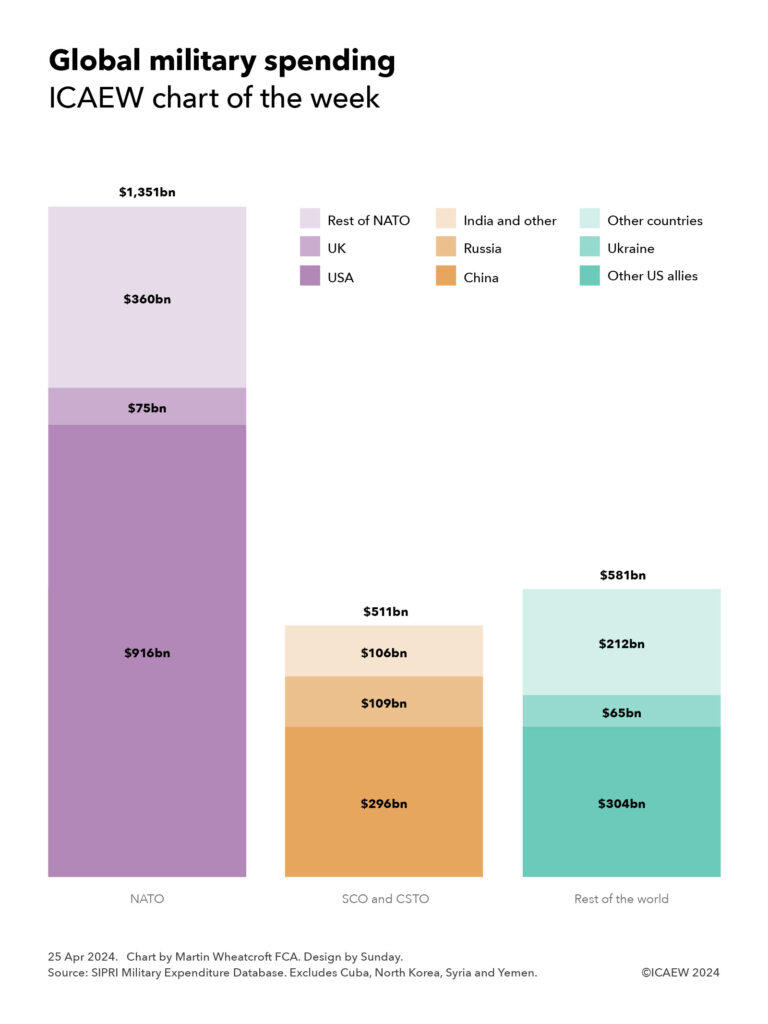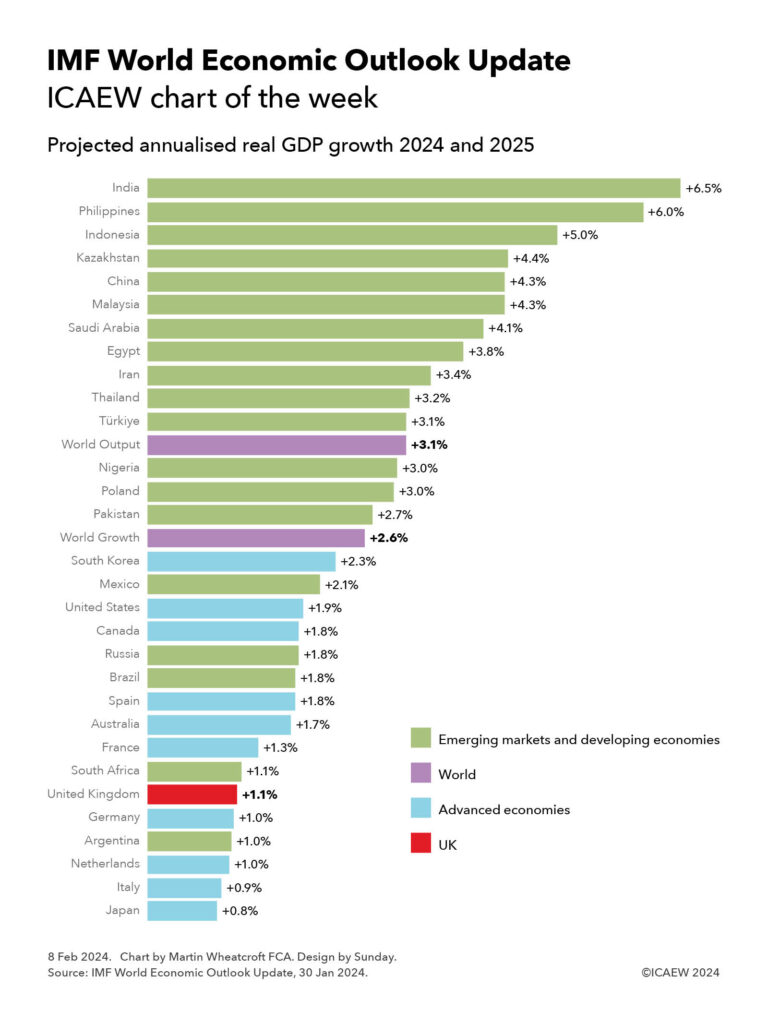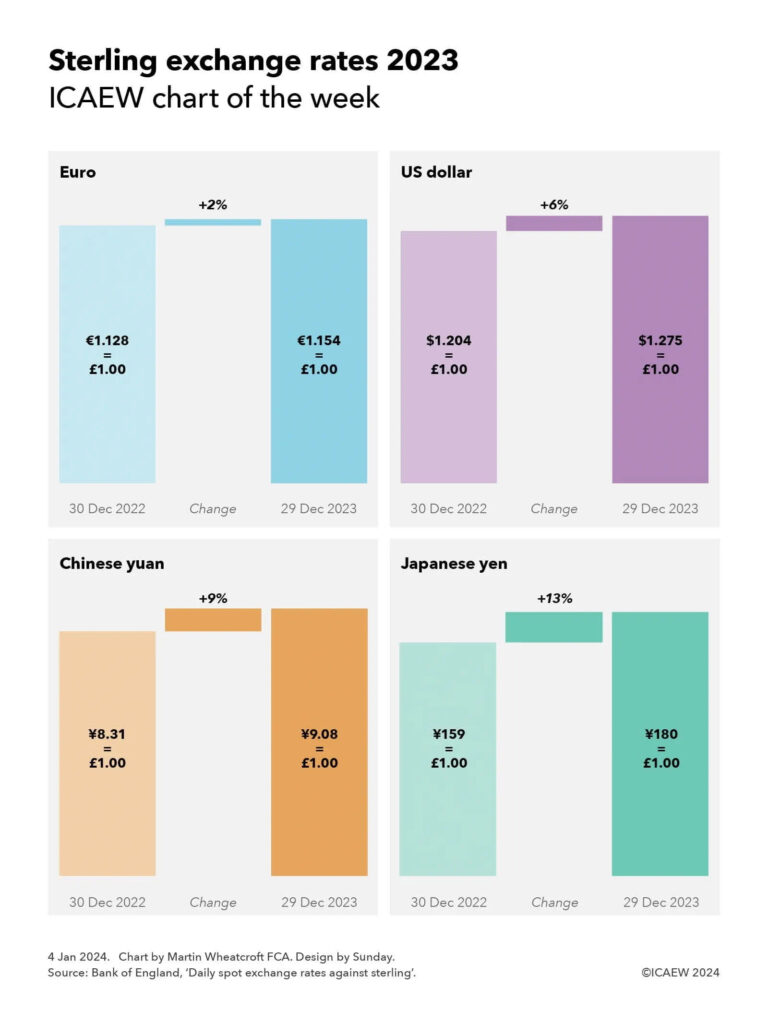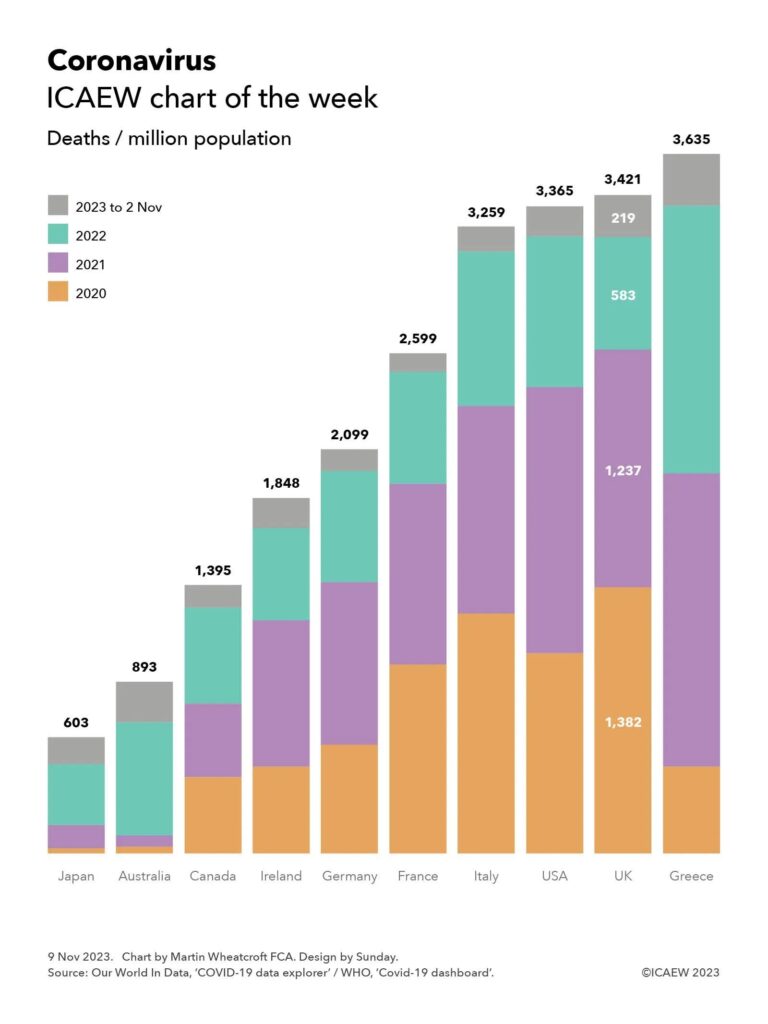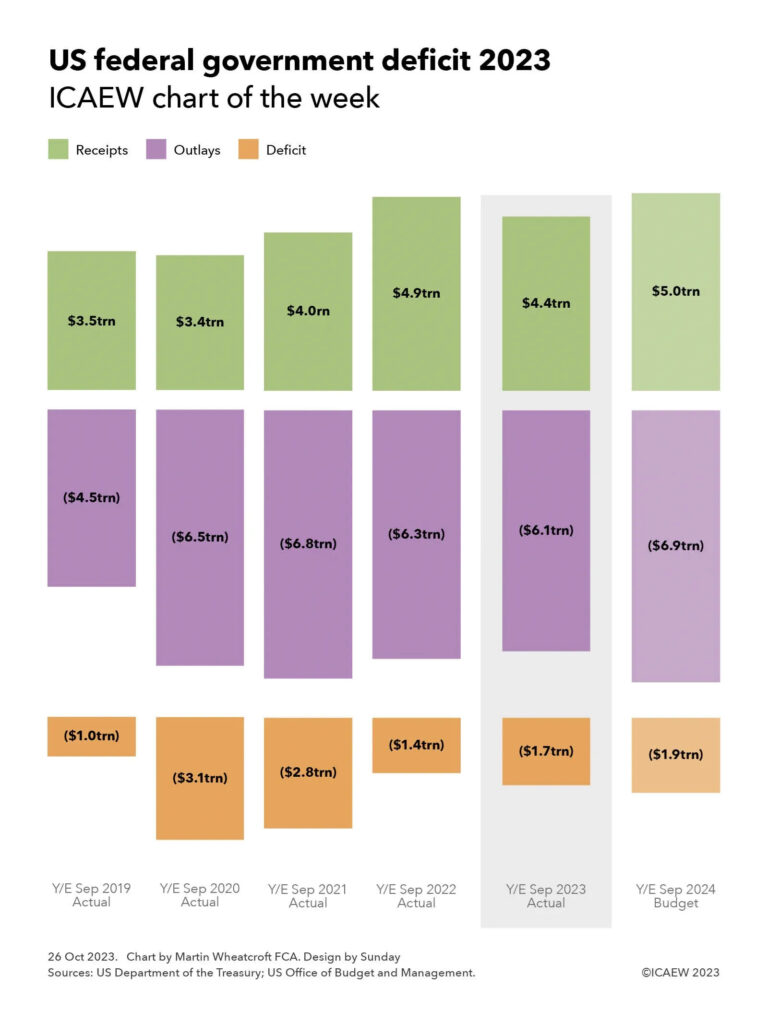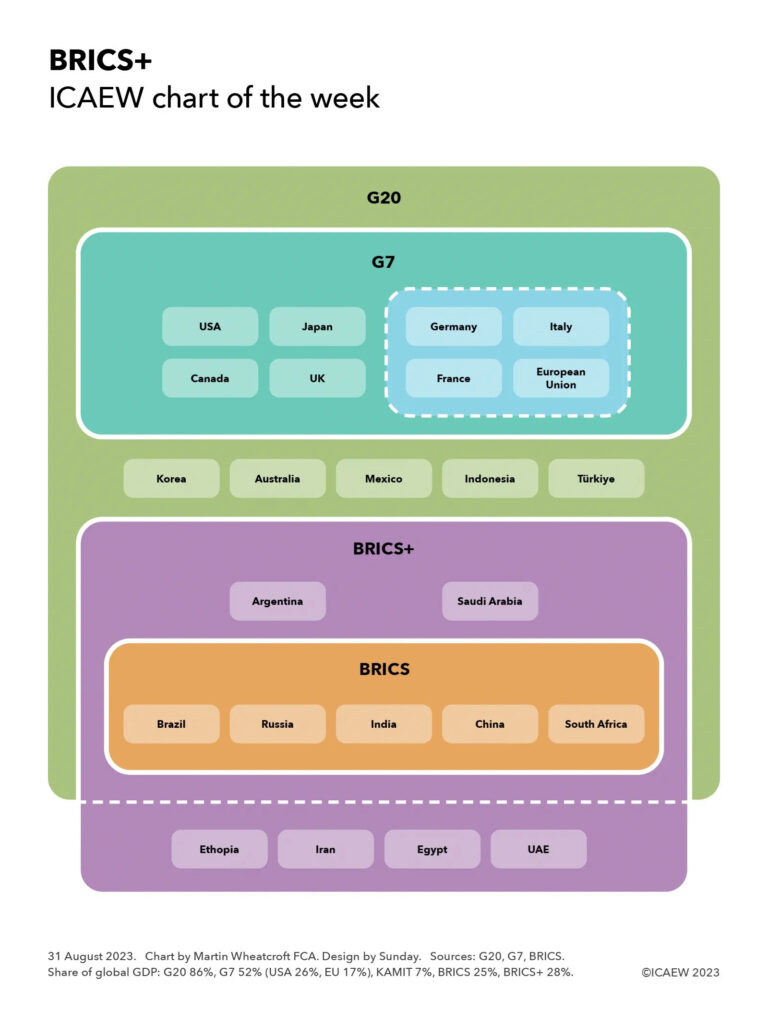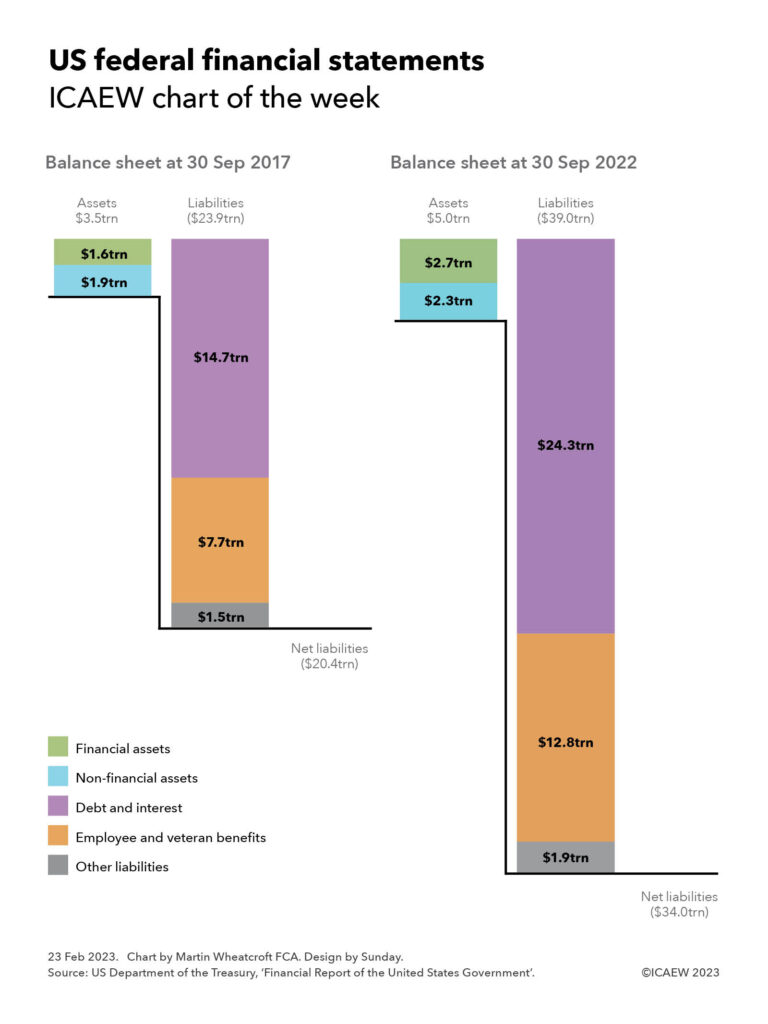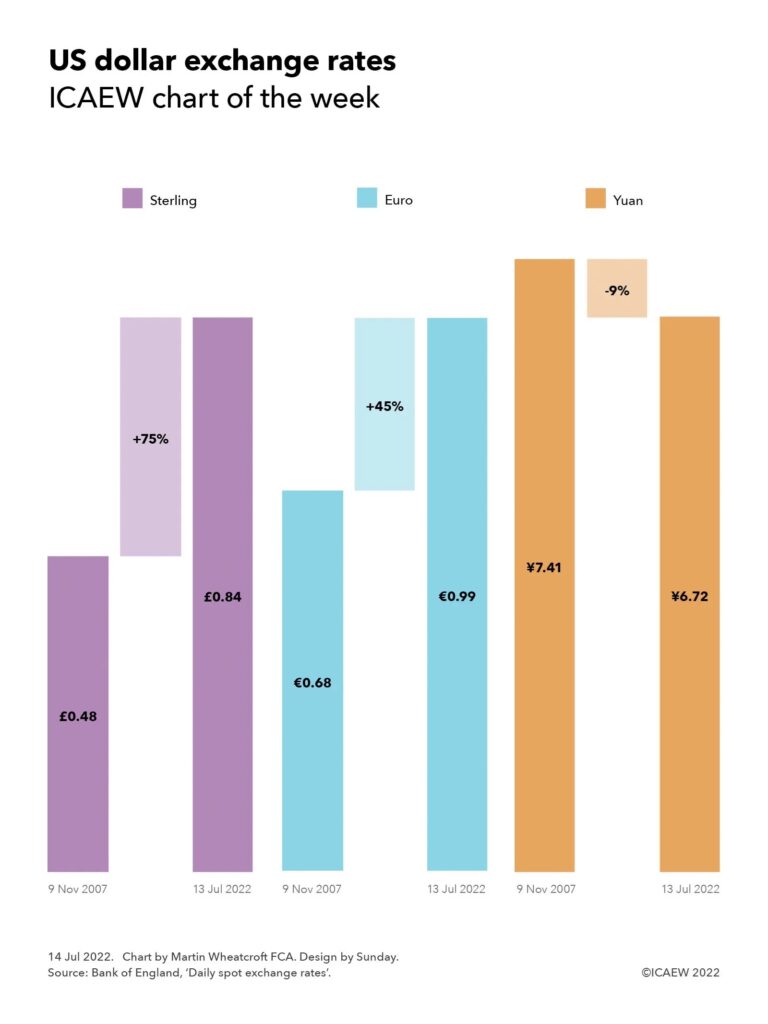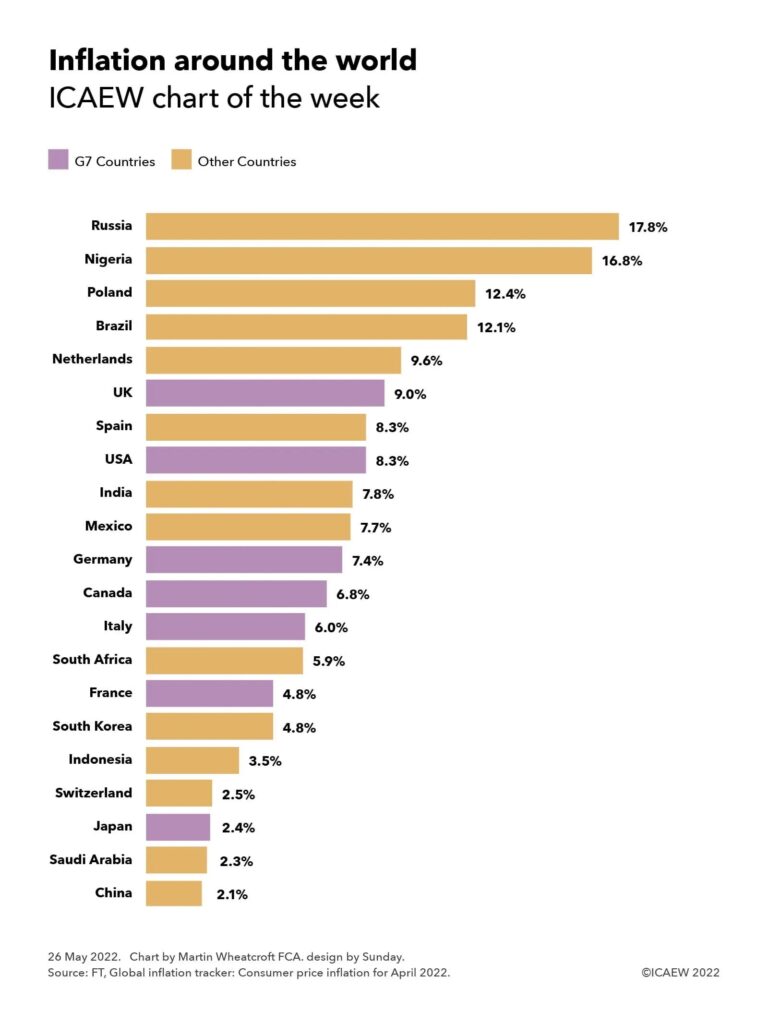My chart for ICAEW this week ‘celebrates’ US Independence Day by setting out the latest congressional projections for federal debt.
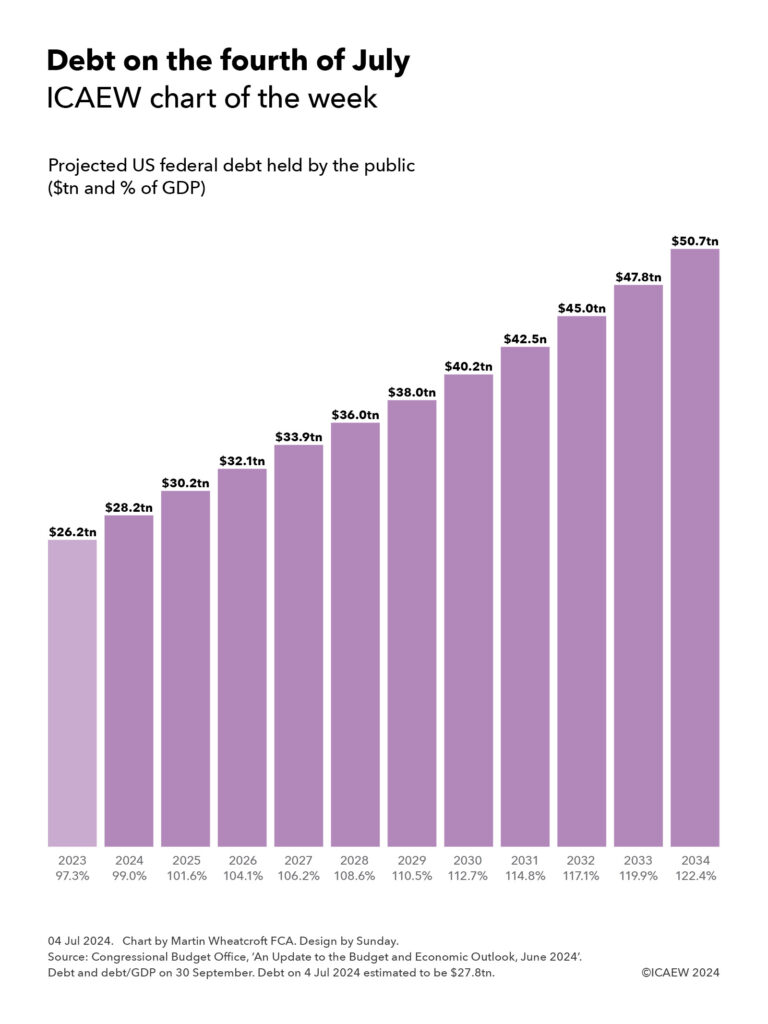
Two hundred and forty-eight years ago, on 4 July 1776, the United States of America declared its independence from Great Britain, inheriting debts used to finance the revolutionary war but without any tax raising powers to fund repayment of the amounts owed. This was addressed by the adoption of the US Constitution in 1789, which enabled Secretary of the Treasury Alexander Hamilton to raise taxes, start repaying those initial debts, and issue new debt to finance a fledgling nation.
My chart this week illustrates how the US federal government has continued to borrow since then, with the Congressional Budget Office (CBO) reporting that US federal debt held by the public was $26.2tn or 97.3% of GDP in September 2023, on track to reach $28.2tn or 99.0% of GDP on 30 September 2024, before rising to a projected $50.7tn or 122.4% on 30 September 2034.
Debt on 4 July this year is estimated to be close to $27.8tn.
The projected rise in debt held by the public over the coming decade is based on extrapolating the gap between federal revenues and spending of around $160bn a month in the current financial year, based on tax and spending legislation enacted at 12 May 2024 together with the CBO’s own assessment of the administration’s financial plans (for example over student loan relief) and assumptions around factors such as interest rates and economic growth.
However, the CBO is keen to stress that these numbers are not a forecast. They say: “The baseline projections are meant to provide a benchmark that policymakers can use to assess the potential effects of changes in policy; they are not a forecast of future budgetary outcomes. Future legislative action could lead to markedly different outcomes. But even if federal laws remained unaltered for the next decade, actual budgetary outcomes would probably differ from CBO’s baseline projections, not only because of unanticipated economic conditions, but also because of the many other factors that affect federal revenues and outlays.”
The challenge for the US is that despite almost 250 years of taxation with representation, that representation finds it difficult to raise taxes to bring debt down, often choosing to cut taxes and increase borrowing instead.
Whether that will change, or whether debt markets force it to change, remains a big unknown in the experiment commenced by George Washington and Alexander Hamilton all those years ago.
